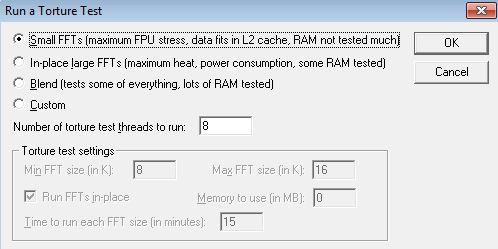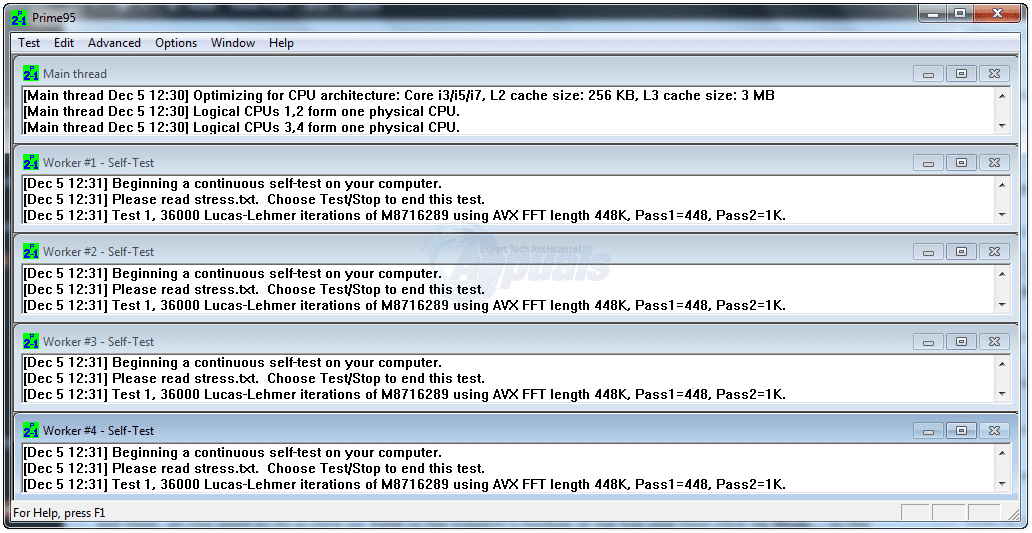How do you stress test a CPU? For the CPU stress test, you must use specific software that loads the CPU, such as Prime95, AIDA64, or IntelBurnTest. Running these programs will test the stability and performance of your CPU.
How to Stress Test a CPU for Optimal Performance
This tutorial will show you how to stress test your CPU for optimal performance.
By following the steps outlined in this article, you will be able to test the stability and performance of your CPU, ensuring it can handle heavy workloads without crashing or overheating. As a result, you can optimize your CPU’s performance and prevent hardware failure.
What You Will Need to Follow the Tutorial: How do you stress test a CPU?
To stress-test a CPU, you will need the following:
- A computer with a CPU
- Stress testing software, such as Prime95, AIDA64, or IntelBurnTest
- There are a few alternatives to these programs, but we recommend using Prime95 as it is widely used and considered one of the most reliable stress testing tools.
Related Read
- What Are The Best Places To Buy PC Parts, CPUs & Graphics Cards Online?
- How To Check Cpu? (And How Fast it is)
- How to Remove a CPU Cooler or Fan Without Damaging the Motherboard?
Step-by-Step Instructions: How do you stress test a CPU?
- Download Prime95

Download the Prime95 CPU stress test tool from the official website and install it on your computer.
- Configure Prime95

Open Prime95 and select “Just Stress Testing” from the menu. Then, select “Blend” from the list of stress-testing options. This option will test both the CPU and RAM.
- Start the Stress Test
Click the “Start” button to begin the stress test. The program will run a series of complex calculations to stress the CPU and RAM.
- Monitor the CPU Temperature

Monitor the CPU temperature using a program like Core Temp. If the temperature gets too high, stop the stress test immediately to prevent damage to your hardware.
- Continue the Stress Test
Let the stress test run for at least an hour to ensure your CPU can handle heavy workloads without crashing or overheating.
Also, Read
- How to Clean A CPU Fan Of Your Computer System in 5 Simple Steps?
- How To Check The CPU And GPU Temperature In Windows 11 Or 10?
- How To Check CPU Temp With MSI Afterburner?
Benefits of Stress Test A CPU
Stress testing a CPU can provide several benefits, including:
- Testing system stability: By running a CPU stress test, you can determine how well your system can handle high CPU usage for an extended period. This test can help identify any stability issues or crashes when the CPU is under a heavy load.
- Identifying overheating issues: A CPU stress test can also help identify overheating issues within your system. If your CPU is consistently running at high temperatures, it can cause damage to the processor and other components in your system. A stress test can help identify if your system’s cooling solution is adequate or needs improvement.
- Benchmarking performance: CPU stress tests can provide a baseline for performance by measuring your CPU’s processing power and speed. This information can be helpful when comparing your system’s performance to others or upgrading or overclocking your CPU.
- Validating system upgrades: Before making any significant upgrades to your system, it’s essential to ensure that the changes will not negatively impact the system’s stability or performance. Running a CPU stress test after an upgrade can help validate that the system is functioning correctly and that the new components are working correctly.
In summary, stress testing a CPU is valuable for identifying stability issues, overheating problems, benchmarking performance, and validating system upgrades. It’s essential for anyone who wants to ensure their system is running correctly and performing at its best.
Conclusion
Congratulations, you have successfully stress-tested your CPU! Following these steps can optimize your CPU’s performance and prevent hardware failure. We hope you found this tutorial helpful.
Please let us know in the comments below if you have any questions or comments. If you liked this article, please share it with your friends and family. Additionally, check out our premium offer for more advanced optimization techniques to take your computer’s performance to the next level.
